
2016 Global Conference on Polymer and Composite Materials (PCM 2016)
May 20th - 23rd, 2016, Hangzhou, China

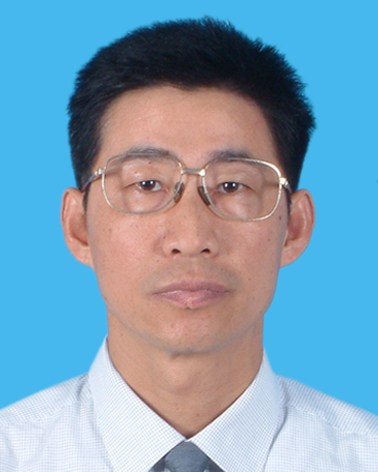 |
Assoc. Prof. Cun-Yue Guo, School of Chemistry and Chemical Engineering, University of Chinese Academy of Sciences, Beijing, China Dr. Guo received his Ph.D. degree in Polymer Chemistry and Physics at the Institute of Chemistry, Chinese Academy of Sciences (ICCAS) in 2003. His principal areas of interest and expertise include functional polymer-based composites and high performance polyolefins. The main goal of Dr. Guo’s research programs is to develop highly efficient catalytic systems for the synthesis of advanced polymeric materials. More... |
|
Speech Title: Ethylene Polymerization in the Nano-channels of Mesoporous Molecular Sieves Abstract:Ethylene polymerization plays significant roles in modern society. Mesoporous molecular sieves (MMS) act as both the catalyst support and nanoreactor for ethylene polymerization. MMS, typically MCM-41 and SBA-15, offers suitable pore sizes for ethylene polymerizations to proceed in an extrusion mode in which the formation of polymeric nano-fibers composed of extended polymer chains from the nanopores of MMS is completed in one step. Moreover, the polyethylenes (PE) and ethylene copolymers (ECP) are in situ compounded with MMS particles to form polymer nanocomposites when the MMS framework collapses due to polymeric chain growth and/or enormous polymerization exotherms. Such a facile methodology integrates numerous merits into one and endows the resultant ethylene (co)polymers with significant advantages, such as increased molecular weights and their distribution, elevated strength and modulus, and improved processability, and so on. This talk addresses the progress in ethylene (co)polymerization catalyzed by organometallic complexes (pre-catalysts) immobilized onto various molecular sieves and property investigation on the resultant polymers over the past 10 years. This talk comprises three main parts focusing on pre-catalysts immobilization, ethylene polymerization in MMS, and the structure and properties of the as-fabricated products from ethylene polymerization. | |
 |
Assoc. Prof. Boxin Zhao, The Department of Chemical Engineering, Waterloo Institute for Nanotechnology, University of Waterloo, Canada Dr. Boxin Zhao is a tenured associate professor in chemical engineering at the University of Waterloo. He is also affiliated with Waterloo Institute for Nanotechnology and Centre for Bioengineering and Biotechnology. Dr. Zhao obtained his PhD in Chemical Engineering from McMaster University in 2004. Before joining the University of Waterloo, Dr. Zhao had worked as a NSERC postdoctoral fellow at the University of California, Santa Barbara. At Waterloo, Professor Zhao has established the Laboratory of Surface Science and Bio-nanomaterials, More... |
|
Speech Title: Biomimetic Adhesion and Its Applications for Developing Functional Polymeric Materials Abstract: Biomimetic adhesion is an emerging scientific field, which learns engineering principles and acquires scientific insights from superior biological designs and applies them to develop novel adhesive and coating materials. In this talk, our research on the adhesion of surfaces and thin films inspired by such biological systems as the lotus leaves’ anti-adhesive and self-cleaning surface, the lizard gecko’s dry adhesive “hairy” toe pads, and the marine mussels’ superior wet adhesive systems will be first reviewed. The systematic studies of mussel-inspired polydopamine thin film and its application for the functionalization of polypyrrole will be discussed in detail. Polypyrrole is an interesting type of electrically conductive polymers but is difficult for large-scale processes because of its hydrophobic chemistry. We developed an innovative way to fabricate polypyrrole nanostructures by incorporating the mussel-inspired catechols (e.g. dopamine) in the oxidation polymerization. The dopamine-functionalized polypyrrole has tunable nanostructures (e.g. nanofibers, nanoflakes, nanorods) that can readily be dispersed in aqueous solutions and form thin coating film with good surface adhesion and enhanced electrically conductivity. In addition, such interfacial phenomena as wetting, adhesion, friction, dispersion and associated micromechanical properties or processes will be highlighted and discussed in terms of their technical implications for the development of functional polymeric materials. | |
 |
Prof. Nao-Aki Noda, Kyushu Institute of Technology, Japan Nao-Aki Noda received his Ph.D. degree in Mechanical Engineering from Kyushu University, Japan in 1984. He has been doing research and teaching at Kyushu Inst. Tech., Kitakyushu, Japan, 1984-87, He is an author of Theory of Elasticity useful for engineers and a co-author of Safety Engineering for Workers in Industry and other several books. He is a co-editor of Stress Intensity Factors Handbook, vol. 4 & 5, Advances in Finite Element Analysis for Computational Mechanics. He is a recipient of Outstanding Paper Medal of Japan Soc. Tech. Plasticity, Sokeizai Industry Technology award from the Materials Process Tech. Ctr., a fellow of JSME (Japan Soc. Mech. Engrs.) and a fellow of JSAE (Soc. Automotive Engrs. Japan). Achievements include researches in stress analysis for notched material testing specimens, and development for large ceramics structures used for steel manufacturing machinery. |
|
Speech Title: Impact Strength Prediction for Notched Engineering Polymers Abstract: Engineering Polymers such as polycarbonate have been used for mobile phones and exterior equipment of automobiles because of their superior impact resistance. In this study, the impact properties of polycarbonate were considered in terms of the time-temperature superposition principle. The dynamic strain rate at the notch root for high speed tensile test was analyzed as a major factor to control viscoelastic property. Then, the master curve for the final fracture elongation was expressed in terms of the strain rate at the notch in conjunction with shift factors. From the maser curve the fracture behavior can be predicted for the wide ranges of impact speed and temperature. The usefulness of the elastic analysis was also confirmed by comparing with the elastic-plastic results. | |
 |
Assoc. Prof. Jianxiong Li, School of Materials Science and Engineering, South China University of Technology, Guangzhou, China Dr. Jianxiong Li received his BS (Rubber Technology) in 1982 and MPhil (Polymer Materials) in 1986 both from South China Institute of Technology and PhD (Materials) from Hong Kong University in 1997. He joined Chemical Dept., Hong Kong University of Science and Technology as Research Associate in 1998 and worked for ASM Pacific as Senior Engineer from 2001 to 2008. Thereafter, he joined South China University of Technology as Associate Professor in polymers. Dr. Li has worked on materials science and engineering for more than 30 years and accumulated extensive experience in academy and industrial. The involved areas include crystalline polymers, advanced engineering plastics, plastic reinforcement and composites, electronic packaging and packaging materials, photochemistry and UV curing, functional materials and sensors, conducting polymers and optoelectronic devices. |
|
Speech Title: Effects of reaction conditions on structure and properties of PEDOT/PET film synthesized by liquid phase depositional polymerization of EDOT Abstract: Due to the brittleness and scarcity of ITO, current ITO based FTCF has poor lifetime and high price. It cannot afford the development of flexible optoelectronic. PEDOT may exhibit high electrical conductivity and optical transparency. It is a good candidate to replace ITO to fabricate FTCF at low cost. However, PEDOT is neither fusible nor soluble. It is difficult to convert virgin PEDOT to thin films. Here, PEDOT coating on PET film was synthesized by Liquid Phase Depositional Polymerization of EDOT. More... | |
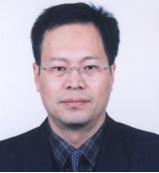 |
CheungKong Distinguished Prof. Jieshan Qiu, School of Chemical Engineering, State Key Lab of Fine Chemicals, Dalian University of Technology, China Dr. Jieshan Qiu is the Director of Liaoning Key Lab for Energy Materials & Chemical Engineering, Director of Center for Nano Materials and Science, Co-Director of the PSU-DUT Joint Center for Energy Research, Dalian University of Technology (DUT), China. More... |
|
Speech Title: New strategies for enhancing capacitive deionization capability of functional carbon materials Abstract: The sustainable supply of fresh water has been one of the key issues for the whole world, which will remain forever as long as we human beings live on the earth. To tackle this issue, novel yet high performance water purification technologies are highly demanded, for example, the production of fresh water from sea or brackish water. The capacitive deionization (CDI) technology, a kind of flow-through supercapacitor, has been regarded as a robust, energy-efficient, and cost-effective alternative for desalination of sea water or brackish water, which has drawn much attention in the past decade. The CDI process is based on the adsorption and desorption of ions onto the carbon electrodes via an electrical double layer (EDL) scheme, of which one of the key and bottle-neck issues is the design and fabrication of functional carbon electrodes with tuned structure and properties. This talk will present our recent achievements made in the synthesis of carbon materials for CDI with an focus on the optimizing the structure-property-desalination performance. | |
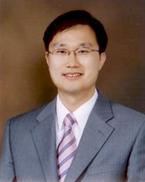 |
Prof. Rakwoo Chang, Department of Chemistry, Kwangwoon University, Seoul 01897, South Korea Dr. Chang received his Ph.D. degree in Physical Chemistry and Physics at University of Wisconsin-Madison in 2003. His principal areas of interest and expertise include structural, dynamical, and thermodynamic properties of polymeric and biological systems using various computer simulation techniques. |
|
Speech Title: Applying polymer concepts to biological systems Abstract: Recent applications of polymer-based molecular simulations to biological systems are presented. The first application is Monte Carlo (MC) simulation studies of neurofilament (NF) brushes. NF is a cytoskeletal filament that is expressed almost exclusively in neuronal cells and assembled from three distinct molecular weight proteins: NF-L, NF-M, and NF-H. The exact nature of the assembly of NF as well as the precise mechanism by which NF regulates axonal diameter and maintain distinctive cytoskeletal organization is not well understood. More... | |
 |
Prof. Kaman Singh, Department of Chemistry, Surface Science, Catalysis and Electrochemistry Laboratory, Faculty of Science, University of Lucknow, India Dr. Singh received his Ph.D. degree in Physical Chemistry at the National Sugar Institute, Kanpur, India in 1997. Prof. Singh has continuously engrossed himself in frontline research in chosen areas particularly pertaining to the problems of synthesis and characterization of materials for their anticipated critical role in upgrading technology, advance surface chemistry & catalysis and electrocemistry, solid state chemistry and development of non-chemical devices for industrial applications. His principal areas of interest and expertise include functionalization of low density PP, PE polymers and carbon surfaces for their application in adsorption/desorption processes. He is a member of Expert Committee on INSPIRE Awards, Department of Science & Technology, Government of India. Prof. Singh has been selected as INSA visiting scientist under International Collaborative/ Bilateral Exchange Programme-2016. More information available on http://www.lkouniv.ac.in |
|
Speech Title: Surfactant-functionalization of polyethylene and polypropylene hydrophobic polymeric supports for adsorption of anti-oxidant polyphenols Abstract: Polythylene (PE) and polypropylene (PP) are examples of low density nonionic polymers. The binding of the surfactant and solvent phase to the nonionic polymers is by hydrophobic adsorption. A minimum hydrophobicity is essential for the polymers to be used. The nonionic and non-functional polymers were functionalized employing a surfactant and were characterized using, FTIR, SEM and BET techniques for adsorption of polyphenols. The pore distribution of functionalized materials falls between macroporous and mesoporous domains. Their specific surface areas are typically in the range SBET = 20-35 m2/g. The adsorption capacities of the functionalized polymers were found to be comparable to those of customary adsorbents. Geometrical optimization was performed at the density functional theory (DFT) level to gain insight into the mode of interaction between supports and polyphenols. This talk will highlight three main parts focusing on pre-surfactant functionalization of PE/PP supports, characterization and mechanism of poyphenol adsorption onto them | |
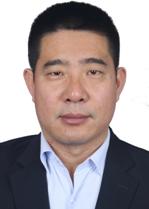 |
Dr. Hongwei Shi, Environmental Corrosion Center, Institute of Metal Research, Chinese Academy of Sciences, Shenyang, China Dr. Hongwei Shi received his Ph.D. degree in Corrosion and Protection at Institute of Metal Research, Chinese Academy of Sciences (IMR) in 2008. His main research interests include developing functional organic coatings, such as nanocomposite coatings, self-healing coatings, self-cleaning coatings and environmental friendly coatings and exploring the related mechanism. His research work focuses on the projects from National Natural Science Foundation of China, National Key Technology R&D Program, 973 Project, international coorperation and industrial need. He has contributed 20 publications in SCI journals and 20 international and domestic conference presentations. |
|
Speech Title: Organic cerium salt-a new green inhibitor pigment for epoxy coatings on aluminium alloy Abstract: For many years, protection of aluminium alloy relies on epoxy coatings containing chromate (Ⅵ) salts. However, due to the toxicity of chromates, their use is prohibited or progressively banned in industries. The development of chromate-free epoxy coatings attaches great importance. It is a big challenge to find environmentally benign inhibitor pigments replacing chromates. In the present work, a kind of novel inhibitor pigment, organic cerium salt, was synthesized and studied as a green inhibitor pigment in epoxy coatings. First, the effectiveness of two representative organic cerium salts, cerium cinnamate and cerium tartrate, More... | |
 |
Prof. Murat TAS, Education Faculty, Department of Science Education, Ondokuz Mayis University, Turkey Dr. Murat Tas is the Head of the Science Education Department, OndokuzMayis University (OMU), Turkey. He was also affiliated with Karadeniz Technical University and Giresun University in Turkey. Dr. Tas obtained his PhD in Natural Science Institute from OndokuzMayıs University in 2004. Before joining the OndokuzMayıs University, Dr. Tas had worked as a visiting researcher fellow at the University of James cook, Townsville, Australia. The main research areas are synthesis and characterization of nitrogen, phosphorus and sulfur containing organic molecules and their metal complexes. Coordination compounds of some biological active compounds, Heterocyclic ligands, Thermal behaviors of the materials, inorganic polymeric compounds, Porous crystalline materials and MOF’s also works by his groups. The current research interests of his group are in design the controllable porous in the inorganic polymers. |
|
Speech Title: Syntheses, Crystal Structure and Spectroscopic Property of Cobalt(II) Azoxybenzenetetracarboxylate Coordination Polymer with 1,2-bis(imidazole-1yl-methyl)benzene Abstract: The design and synthesis of coordination polymers have received much attention due to their fascinating structures and potential applications [1]. The general strategy for designing of coordination polymers relies on the utilization of appropriate multidentate ligands. In this study, 3,3’,5,5’-azobenzenetetracarboxylic acid (H4abtc) and 1,2-bis(imidazole-1ylmethyl)benzene (obix) linkers were used as multidentate ligands to synthesize coordination polymers | |
 |
Assoc. Prof. Bornali Sarma, VIT University, India Dr. Bornali Sarma, Associate Professor, VIT University, Chennai, INDIA has obtained her Ph. D. in Plasma Physics from DST govt. of India aided “Institute of Advanced Study in Science & Technology”, Assam in the year 2004. Her research interests & expertise are in the field of basic plasma experiments, Non-linear plasma dynamics, Plasma assisted materials processing mostly related to textile industry, biomedical application, defence etc. She has completed & also presently running couple of India Govt. funded research projects. Her main focus on plasma assisted material processing research is to find alternative eco-friendly & cost effective solution towards the textile as well as the biomedical application. |
|
Speech Title: Surface modification of plasma pretreated Tasar silk fabrics coated with ZnO nanoparticles against antibacterial activity Abstract: Plasma pretreatment of raw tasar silk fabrics has been carried out in DC Glow discharge plasma at constant power and for different treatment times (5 minutes, 10 minutes, and 30 minutes). Plasma technologies have been extensively applied to improve the surface properties of the textile material. ZnO nanoparticles (ZnO NPs) play a significant role in antifungal, antibacterial, cleaning and UV Protection. ZnO NPs has been synthesized by wet chemical methods and size of the same is found to be 26 nm using XRD. Plasma treated silk fabrics is coated with ZnO NPs using vacuum thermal evaporation technique. Analysis of raw, with and without plasma treated silk fabrics coated with ZnO NPs has been carried out by XRD and FTIR. The surface morphology of the coated fabrics is analyzed using SEM, confirming the adherence of nanoparticles on the surface of the fabric. Elemental analysis is being carried out using energy-dispersive spectroscopy, which confirm the presence of ZnO nanoparticles on the surface of the fabric and improved surface properties in terms of hydrophobicity determined by using a contact angle test. The plasma treated silk fabrics coated with ZnO NPs composite showed a better antibacterial activity against Escherichia coli Bacteria. | |
 |
Dr. Richard D. Sudduth, President and Chief Scientist, Materials Research and Processing, LLC, United States Richard D. Sudduth, has a B.S. in Chemical Engineering from the University of Nebraska (’65) and an MS in Chemical Engineering from the University of Michigan (’67). His PhD however is in Macromolecular Science from Case Western Reserve University (‘73). Over the years he has worked for several companies that including Brunswick Defense in Lincoln as well as Boeing where he worked on Materials for the Advanced Tactical Fighter as well as the Space Station. He has also taught at two Universities including the University of Southern Mississippi and the University of Louisiana at Lafayette. Consequently, he has over 80 technical publications and presentations. Most of these articles have involved the optimization of the physical properties of polymer composites and coatings including articles addressing viscosity, tensile strength, creep, stress relaxation and impact. In general, these articles have primarily involved the theoretical and practical application of particulates as used in the blending and compounding of polymer composites and coatings to achieve certain desired physical properties. Additional articles have addressed various curing approaches to optimize the physical properties of composites and coatings as well. Dr. Sudduth is currently President and Chief Scientist of Materials Research and Processing, LLC. |
|
Speech Title: A New Description of Viscoelasticity that can be applied to Mechanical Properties such as Constant Strain Rate, Creep and Stress Relaxation Analysis Abstract: Viscoelasticity in polymer compounds has often been simulated over the last half century by utilizing a mixture of both elastic and viscous components as described with elements of springs and dashpots. These simplified viscoelastic models have typically included combinations of Voight and Maxwell models either in parallel or in series. Unfortunately, these types of models have been found to be difficult to apply to real world applications that involve creep, constant strain rate and/or stress relaxation. More... | |
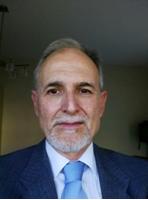 |
Prof. Cengiz DUNDAR, Department of Civil Engineering, Faculty of Engineering and Architecture, Cukurova University, Adana, Turkey Professor Cengiz Dundar received his Ph.D. degree in Civil Engineering fromthe University of Birmingham, United Kingdom in 1981. He is full professor and head of Structural Engineering Division of Civil Engineering Department of Cukurova University, Turkey. He has being doing research and teaching at the Cukurova University since 1982. His research activities mainly focus on Behavior and design of concrete structures, earthquake engineering, repair and rehabilitation of damaged structures, behavior of high strength reinforced and composite columns with and without steel fibers under biaxial bending and axial load, load deflection behavior of steel, FRP and hybrid FRP- steel reinforced beams, behavior of carbon fiber polymer confined high strength reinforced and composite slender columns with and without steel fibers under biaxial bending and axial compression. |
|
Speech Title: Prediction of load-deflectionbehavior of multi-span FRP and steel reinforced concrete beams Abstract: In this talk a numerical procedure to determine the deflection of concrete members reinforced with fiber reinforced polymer (FRP) or steel bars will be presented. This procedure is implemented into the stiffness matrix to allow for general use in the structural analysis. It considers effective flexibilities of members in the cracked state using either the curvature distribution along the member or available effective stiffness models under any loading or support conditions. In general, structural concrete members can be considered to have three cracked regions (two at the ends and one at midspan) and two uncracked regions along their length. In this numerical procedure, the contributions of these regions to the member stiffness matrix are computed using a numerical integration technique. Using this procedure, a software program is developed which allows for the load-deflection behavior of a member reinforced with either FRP or steel bars and subjected to any loading or support condition to be rapidly determined. This calculation procedure is evaluated using available experimental data on the load-deflection behavior of simple and two-span beams reinforced with FRP and steel bars. Through comparison of the results, it is observed that the load-deflection behaviors calculated using the proposed approach utilizing the member moment-curvature response are consistent with the experimental data. This approach can provide a useful tool for the general calculation of deflection regardless of reinforcement type and can be used throughout entire range of member behavior up to flexural failure. | |
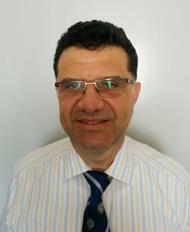 |
Prof. Ahmed Kamil Tanrikulu, Department of Civil Engineering, Faculty of Engineering and Architecture, Cukurova University, Adana, Turkey Prof. Ahmed Kamil Tanrikulu received his Ph.D. degree in Civil Engineering fromthe Cukurova University, Turkey in 1991. He is full professor of Structural Engineering Division of Civil Engineering Department of Cukurova University. He has being doing research and teaching at the Cukurova University since 1988. His research activities mainly focus on behavior and design of concrete structures, earthquake engineering and structural dynamics, rehabilitation and strengthening of existing structures, flexural behavior of steel, FRP and hybrid FRP-steel reinforced concrete beams. |
|
Speech Title: Tension Stiffening Effect on the Flexural Behavior of FRP and Steel Reinforced Concrete Beams Abstract:In this talk, tension stiffening effect on load-deflection behavior of concrete beams reinforced with FRP and steel bars is presented. In order to investigate tension stiffening effect on flexural behavior, bilinear tensile stress-strain model was considered for concrete material. In this modela parameter controls the tension stiffening effect on the load-deflection behavior of the beam. Load-deflection curves of 12 FRP reinforced concrete beam specimens available in the literature were obtained with varying this parameter between 2 to 25, and then were compared with the experimental results. In conclusion it is observed that the value of tension stiffening parameter to be taken into account for calculations in order to predict load-deflection behavior of reinforced concrete beams significantly depend on the reinforcement ratio and the mechanical properties of reinforcement. | |
 |
Prof. Zhicheng Zhang, Department of Applied Chemistry, School of Science, Xi’an Jiaotong University, China Zhicheng Zhang earned his BS and MS in polymer materials and engineering in 1999 and 2002 from Xi’an Jiaotong University, China, and his PhD in polymer physics and chemistry in 2005 from Institute of Chemistry, Chinese Academy of Sciences. From 2005 to 2008, he worked as a postdoc in Department of Materials Science and Engineering, Pennsylvania State University, USA. Since 2008, he came back to work in Xi’an Jiaotong University as full professor. He is leading a group focus on the synthesis and modification of fluoropolymers, fabrication of novel electroactive materials for energy generation, transformation and storage. He has published over 80 SCI papers with a citation over 1000 and his personal H-index is 18. Prof. Zhang is currently regular referee for over 50 polymer and materials journals including Macromolecules, Macromolecular Rapid Communications, Polymer Chemistry, ACS Applied Materials and Interfaces, Journal of Materials Chemistry and Applied Physics Letters. He is member of American Chemical Society and Chinese Chemical Society. In 2010, he was supported by Program for New Century Excellent Talents in University. So far, he has chaired over 20 scientific research programs including two from NSFC. |
|
Speech Title: Synthesis of PVDF Based Ferroelectric Polymers with Tunable Ferroelectric Performances Abstract:Poly(vinylidene fluoride) (PVDF) based relaxor ferroelectric polymers show great potential application in transbucers, sensors and artificial muscles for their excellent electrostrictive properties. In state-of-the-art relaxors, trifluoroethylene (TrFE) units have to be incorporated to maintain the TTTT conformation of PVDF polymer chain, which is crucial to achieve large polarization under electric field. To accelerate the polarization relaxation of ferroelectric domains, defects have to be designed to tailor the sequence length of PVDF chain in TTTT conformation by either exposing the P(VDF-TrFE) films to electron beams or inserting bulky comonomers into the polymer chains.More... | |
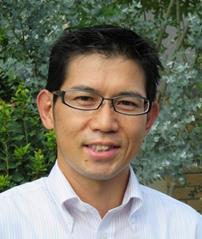 |
Assoc. Prof. Kohji Ohno, Institute for Chemical Research, Kyoto University Kohji Ohno received his PhD from Kyoto University in 1999, under the supervision of Professor Takeshi Fukuda. From 1999 to 2001, he worked as a postdoctoral researcher in the group of Professor David M. Haddleton at the University of Warwickin United Kingdom. He has been working at the Institute for Chemical Research of Kyoto University as an assistant professor (2001-2009) and as an associate professor (2010-present). His current research interests include living radical polymerizations, polymer brushes, synthesis and self-assembly of fine particles, and biomedical applications with fine particles. |
|
Speech Title: Polymer-Brush-Decorated Fine Particles: Precision Synthesis and Applications Abstract:It will be introduced that surface-initiated living radical polymerizations provide well-defined polymer chains densely grafted on particles of various shapes including spheres, rods, and plates, and that depending on their shapes, the hybrid particles grafted with polymer brushes form colloidal crystals or liquid-crystals in their suspensions. Functional hybrid particles having external-field-responsibility quickly yet reversibly form an ordered array according to the extent of external fields. Moreover, ordered structures of hybrid particles form in their thin films; some films exhibit an iridescent color arising from the periodicity of refractive index, while rod- or disc-shaped particles provide thin films having unique optical anisotropy. | |
 |
Prof. Hyung-Ho Park, Department of Materials Science and Engineering, Yonsei University, Korea Professor Hyung-Ho Park received his PhD in Materials Science in 1988 from the University of Bordeaux I in France. After spending one year as a post-doctoral fellow in the chemistry laboratory of CNRS Bordeaux, he joined the Electronics & Telecommunications Research Institute (ETRI) in Korea in the field of processing and characterizing semiconductors. Currently (1995-), he is a professor in the Department of Materials Science and Engineering of Yonsei University in Korea. His research focuses on the preparation, characterization, and application of various functional thin films including nano-particle preparation, nano-hybridization, and nanostructure formation. Nano-hybrid thin films are prepared by the incorporation of nano-particles or in situ one-pot synthesis. Nanostructure formation involves nano-particle distribution in TCO and organic conductors and the control of nano-pore size and distribution in mesoporous thin films. His research includes the micro/nano photoresist-free direct-patterning of various metal oxides thin films including TCO and ferroelectrics using photochemical metal-organic deposition. |
|
Speech Title: Nanoparticles incorporation effect on PEDOT: PSS polymer films Abstract:In this work, PEDOT:PSS was incorporated with various inorganic nanoparticles such as insulating oxide, semiconducting oxide, and metal nanoparticles. Change of bonding states, valence band structure, surface morphology, and so on of inorganic NPs-PEDOT:PSS hybrid films by the incorporation with nanoparticleswere investigated by AFM, XPS, anlysis tools in Pohang acceleration laboratory. Comparative study with the properties of pristine PEDOT:PSS enabled us to confirm the effect of nanoparticles on the properties of PEDOT:PSS and resultant properties of PEDOT:PSS hybrid material. More... | |